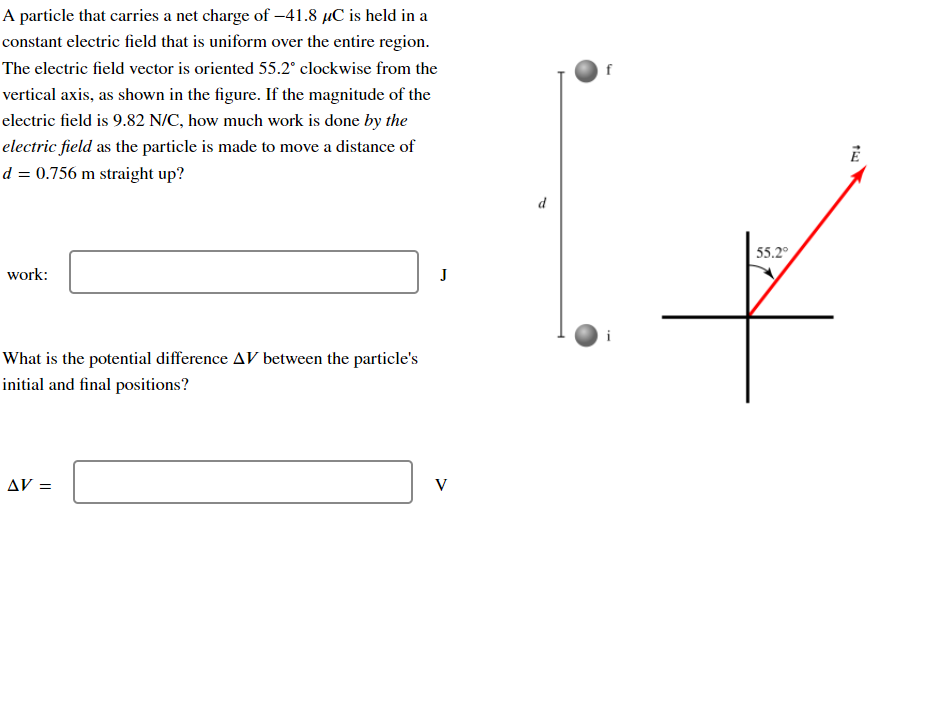A particle that carries a net charge of –41.8 µC is held in a constant electric field that is uniform over the entire region. The electric field vector is oriented 55.2° clockwise from the vertical axis, as shown in the figure. If the magnitude of the electric field is 9.82 N/C, how much work is done by the electric field as the particle is made to move a distance of d = 0.756 m straight up? work: J What is the potential difference AV between the particle's initial and final positions?
Dielectric Constant Of Water
Water constitutes about 70% of earth. Some important distinguishing properties of water are high molar concentration, small dissociation constant and high dielectric constant.
Electrostatic Potential and Capacitance
An electrostatic force is a force caused by stationary electric charges /fields. The electrostatic force is caused by the transfer of electrons in conducting materials. Coulomb’s law determines the amount of force between two stationary, charged particles. The electric force is the force which acts between two stationary charges. It is also called Coulomb force.

Charge q = -41.8=-41.8
=55.2
The electric field E = 9.82 N/C
Trending now
This is a popular solution!
Step by step
Solved in 2 steps








